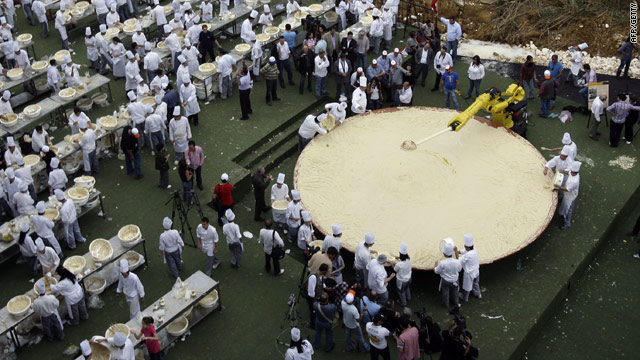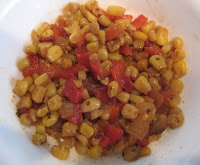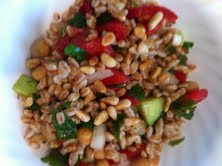
It’s funny how one little e-mail can start an avalanche of questions, phone calls, and some interesting answers.
Not long ago, I heard from professor Dr. Robert Jantzen, who wanted to know why I omitted a very special recipe from a story I’d done about the cuisine of Musa Dagh. It seems his in-law’s family traces back to Yoghun-Oluk, one of the 7 villages that make up Musa Dagh. My maternal grandparents were from nearby Haji-Habibli.
The recipe in question was Goulougoos…or Galagacia Soup or..Malanga Soup. The reason I hadn’t mentioned it in my previous story is because I’d never heard of it until that very moment.
Since my mother is here for the season, I questioned her. After all, it was her parents who hailed from this region. She thought for a few moments, then said she’d heard of goulougoos but her mother never made it.
I thought that would be the end of it. Silly me!
Mom pulled out her little red phone book and started making some calls. First to the Magzanian sisters, who wrote a cookbook called The Recipes of Musa Dagh. Naturally, not only did they know the recipe, it’s in their cookbook! Alberta Magzanian said it’s one of their FAVORITE recipes.
As a matter of fact, on page 164 in their cookbook is a photo of the 3 Magzanian sisters and behind them is the large leaf of the elephant ear plant, the root of which (see photo at the top) is used in this recipe. We’ll get to that in a moment.
The second call went out to Jack Hachigian, another member of the Musa Daghtsi clan, who has also written a cookbook. This one, in memory of his parents, is called Secrets From an Armenian Kitchen. Jack was surprised to hear from Mom, but more surprised to hear her question about goulougoos. He said he LOVED this recipe, and couldn’t believe he hadn’t included it in his cookbook – a terrible oversight!
OK, so now I was REALLY curious! What was the deal with this soup, and what was this mysterious main ingredient?
Dr. Jantzen sent me the link to his mother-in-law’s recipe and information about the plant that makes this recipe happen. He has graciously insisted I share this with you. Click here to access his information and his mother-in-law‘s recipe.
The Magzanian’s recipe varies a bit, but apparently provides an equally delicious end result. (Sorry, you’ll have to buy the cookbook to see their recipe. You can click on our Amazon.com link below to purchase their book.)
So, now we ALL know about goulougoos, a hearty soup recipe — and just in time for winter.





FYI, there is something wrong with the link in this article. If you click on it, you get an error page, but if you copy the text and paste it in your browser's address bar, it works fine. If you hover over the link, you will notice (in the browser status bar on the bottom of the window) that the URL is not the same.
By the way, it sounds from Dr. Jantzen's description, that if you cannot find malanga, you could substitute taro root or maybe even yam. Not having tasted malanga, I can't say for sure.
Thanks, Ara, for pointing that out. Not sure what the deal is with the link, but we've added a note that may help.
Also, you're right about the similarity to taro. We're actually wondering if taro, which grows in the region, might be the original ingredient. Does anyone know for sure?
A novice finds your comment section interesting and difficult to locate. Might be viewed more if others aren't having the same problem.
My malanga soup link has been copied wrong, there is a period at the end in the visible URL address which derails it if you copy that, but the underlying URL address is to some blogger address that is irrelevant.
The correct address is indeed:
http://www.drbobenterprises.com/recipes/malangas.htm
and yes, the malanga is not exactly the right member of the family of similar tubers, but in the USA it is as close as you can get.
It is really great in winter as pointed out above, so go ahead and try it before the spring!
—dr bob
Thanks Dr. Bob. The link should work now.